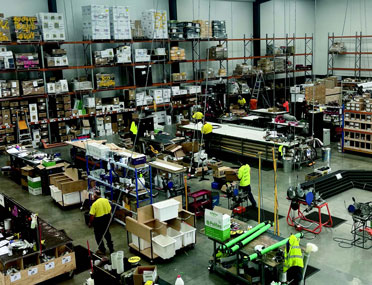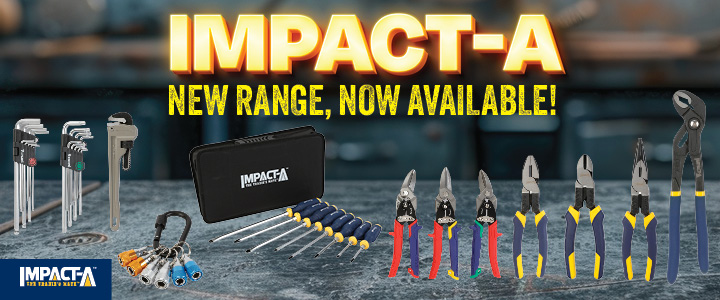Prefabricated modular plumbing is not just a new, innovative way to fit plumbing hardware – it’s a real game changer.
By Frank Leggett
During every build, various plumbing parts or components are manufactured away from the work site. So, while prefabricated plumbing has always been a part of the industry, it takes place on a very small scale.
Richstone Group has taken this concept and expanded it, designing and manufacturing common elements in a controlled environment and then assembling and installing onsite. A study compiled by Richstone revealed that 54 per cent of all bathrooms have the same layout. When a bathroom contains washing machine cupboards, this figure is increased to 66 per cent.
“We started with simple elements,” says Shannon Egglestone, CEO and founder of the Richstone Group. “Now we go right through to bespoke. In an apartment building, 80 per cent of what we install is manufactured in our factory. Everything we prefab is designed from a manufactured drawing. This ensures it meets all requirements of the ASC500 plumbing code of Australia.”
PREFAB MODULES
The Richstone Group, through its manufacturing arm Modular Prefab Solutions, also builds full modules where a plumber simply connects drains and water lines. This works extremely well for multi-unit dwellings provided there is accurate scheduling.
“If we’re supplying a 40-storey building, all 40 storeys are not built at once,” says Egglestone. “The design drawings are made once, the manufactured drawings are made once, but the modules are made and supplied multiple times over the two year life of the build. Each module must arrive onsite on the day it needs to be installed.”
While prefab works well on large-scale projects, it’s also effective on small bespoke projects. The big advantages, across the board, are huge time-savings and material control.
“Our wastage of PVC pipe on a module is 1.9 per cent,” says Egglestone. “Our wastage of PEX pipe is 0.9 per cent. Copper wastage is not even measurable because it’s fully recyclable and the smallest amount can be reused. On an in-situ build, you would generally allow for 10 per cent wastage on everything.”
EFFICIENCY AND ACCURACY
The Richstone Group, based in Melbourne, is a parent company with plumbing at the heart of its business. It includes Richstone Plumbing that has about 140 staff and the manufacturing arm, Modular Prefab Solutions, that employs 27 staff. Modular Design provides all the hydraulic and prefabrication design, employing 10 people.
Shannon Eggleston is involved in all areas of this vertical business model. While his vision is to create effective prefabrication of plumbing, his plan is to change the way the industry operates.
Richstone first started prefabbing components in 2008. As digital technology improved, it allowed for more accurately surveyed set-outs, which allowed for more components to be prefabbed. This is particularly important when it comes to drainage.
His team worked with the University of Melbourne on prefabricated wall elements as part of a research grant with the School of Architecture.
“The government grant was to build pre-plumbed prebuilt wall elements for commercial construction,” says Egglestone. “A Multiplex project was our test case. We built an apartment in all elements within the factory. We then transported it to site and installed it. All the walls were stood up at the work-front in about 11 minutes. We then connected the drains and the prefabbed hot and cold spine. The entire apartment was plumbed up within 45 minutes.”
Richstone is currently trialing the use of automated reality where designers wear reality goggles and design in 3D space instead of off a plan.
CHANGING THE CULTURE
The ultimate flow-on from prefabrication is faster build times and lower costs. All components are built in a controlled environment that allows for extreme accuracy. There is little or no rework and everything is designed to meet code. Provided the plumber installs the product in the correct manner, it will meet all standards.
“We’re changing the culture of plumbing and I understand why some tradies and plumbers have concerns,” says Egglestone. “The simple fact is that prefabrication doesn’t take work away; it just allows you to do more work in a shorter period of time. It increases efficiency without putting any undue stress on tradies.”
The most important part of prefabrication is logistics. Everything is taken into account—how it’s packaged, how it’s delivered to site, how it’s moved around the site.
“The key to prefabrication is making sure it gets there on time, in full, and in the right sequence of packaging. Packaging the product is just as important as the actual design in the module.”
MANY BENEFITS
Using prefabricated plumbing elements offers benefits right across the board. There are significant cost-savings for clients by utilising common parts with an efficiency of labour and drastically reduced wastage. The builder saves on installation time and reduces high-risk work when components are manufactured in a controlled environment. The project benefits from increased design quality and consistency.
“I truly believe that prefabrication is the way of the future,” says Egglestone. “Plumbers have always relied on innovation of product, but to achieve significant improvement, innovation must be driven through a change in process.”






